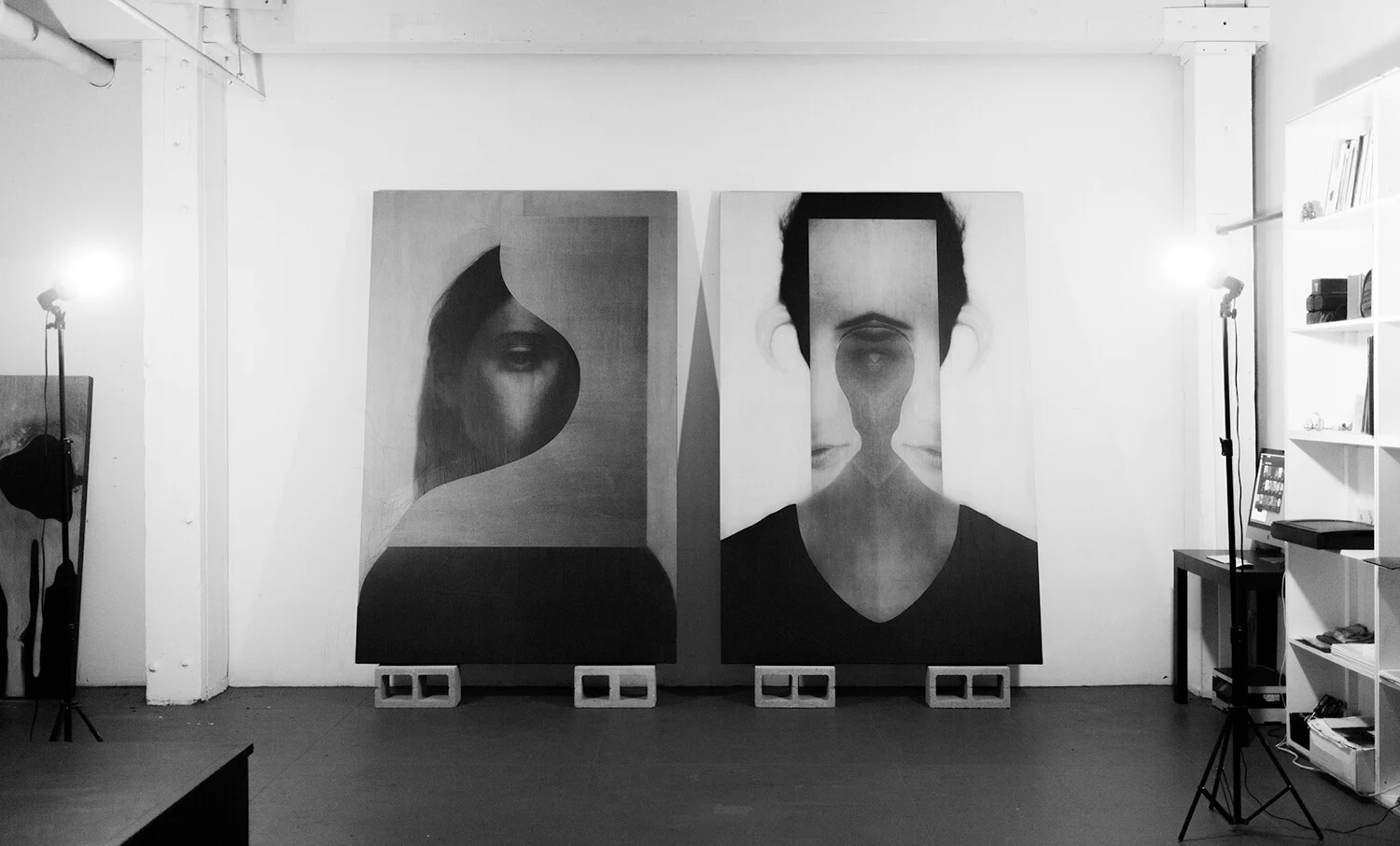

Jesse Draxler’s newly published art book Misophonia was released on a record label. That’s no coincidence, because sound informs much of his multi-disciplinary practice. In his studio he uses music as a mental tool to change his brain chemistry, to become more present or to pull him into a workflow.
Other times music is a more direct influence on the works itself, as he sets out to visually express the emotions a sound has conjured inside him. This affinity has led him to create work for musicians like Zola Jesus and Chelsea Wolfe, and an album cover for Prince.
The mediums that aid Jesse’s expression are varied. He ritually rotates between them, moving on to collage when he feels burnt out by an intense period of drawing or painting.
Jesse’s artworks range from photographic abstractions of the natural world – the networked roots of a tree reminiscent of veins – to provocative explorations in text. The images he may be most well-known for are his macabre portraits distorted by his hand in which his subjects’ features are duplicated, twisted or erased through the cutting of paper or the smudging of paints.

Though he manipulates a diversity of faces, Jesse's artworks act as a reflection of himself, unavoidably becoming self-portraits. “I underpin my point of view,” he says. “I am the common thread. I developed my point of view as I developed myself – there is no separation.”
No matter how they’re produced, Jesse’s artworks are always black and white. He found out he was colorblind in first grade when the horse he was coloring in turned out green. Things clicked into place for him as an artist with the decision to cut color from his palette. Working exclusively in monochrome brings the works down to their essence.





When working on a new collage piece, Jesse chooses both images he likes and dislikes to work from. When it’s the latter, he says, “I just want to ruin it, or amplify the absurdity of it.” When he likes the imagery he is working with, he thinks of it as its own medium, “as something like paint.”
Working from the gut, emotion plays a critical role in all of Jesse’s output. “It is the muse, the process and the material,” he says. His most instinctual works are possibly those where he forgoes the cutter or brush to use his hands to paint.
“I like finger painting because it is as far from the meticulous and technical side of my practice as possible,” he says. “I enjoy the freedom from control, I’m constantly developing new process to distance myself from that concept. Though I do use all mediums and processes, brushes included, finger painting is one method I grew particularly fond of as I try to use my hands directly as much as possible. I want to get in amongst the medium, be part of it.” His mark-making he describes as records of motion.




Misophonia is itself a record of the last half-decade of Jesse’s career. He describes selecting which artworks made it into the pages as “a slow process of distillation.” He says, “I have a number of hard drives full of imagery from the past five to six years so I started digging through those and pulling anything that interested me into a new folder. Once all the hard drives were scoured I then went through the new folder and pulled what I felt strongest into another new folder.”
Last year, Jesse’s solo show Tire Fire was accompanied by an unusual installation. Titled The Tower it consisted of 52 sheets of paper 22 x 30” in size and painted black on both sides. Each was a drawing that didn’t make it through Jesse’s process of self-editing. As an artist who works intuitively and abundantly, these purges have become a key trait of his art making. By destroying a piece he doesn’t feel strongly about, he avoids the possibilities for self-doubt.


The title refers to the tower card in a tarot deck. “The message of that card, as I internalize it, is the tower crashes presenting the opportunity to rebuild. Creation through destruction. It is a message that underpins my entire life. The most important lessons I have learned through loss, trial, failure, guilt, hopelessness – the wreckage – these have been teachers, so this was part of an ongoing homage.”
Words by Alix-Rose Cowie.

